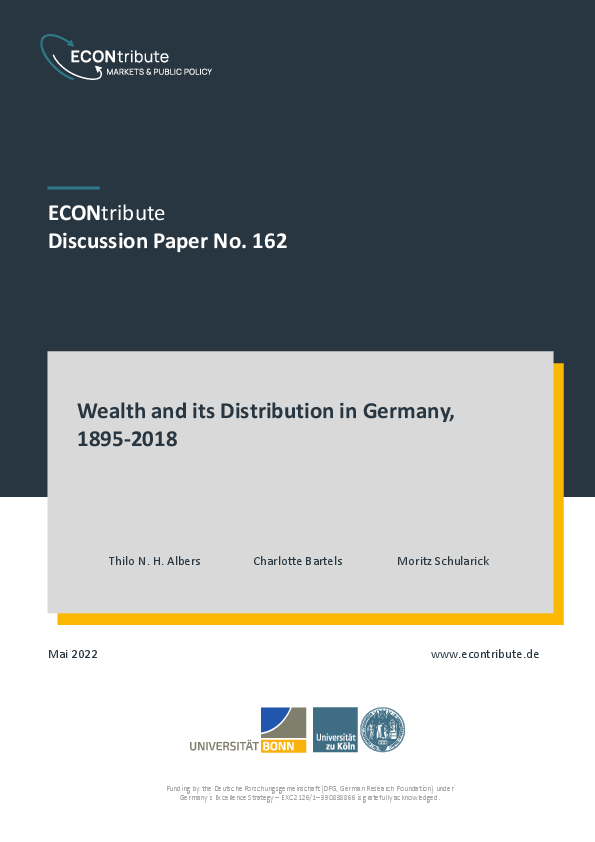Journal Article
Wealth and Its Distribution in Germany, 1895-2021
Authors
Publication Date
JEL Classification
Key Words
Related Topics
Financial Markets
German history over the past 125 years has been turbulent. Marked by two world wars, revolutions and major regime changes, as well as a hyperinflation and three currency reforms, expropriations and territorial divisions, it provides unique insights into the role of country-specific shocks in shaping long-run wealth dynamics. This paper presents the first comprehensive study of wealth and its distribution in Germany since the 19th century. We combine tax and archival data, household surveys, historical national accounts, and rich lists to analyze the evolution of the German wealth distribution over the long run. We show that the top 1% wealth share has fallen by half, from close to 50% in 1895 to 27% today. Nearly all of this decline was the result of changes that occurred between 1914 and 1952. The interwar period and the wealth taxation in the aftermath of World War II stand out as the great equalizers in 20th century German history. After unification in 1990, two trends have left their mark on the German wealth distribution. Households at the top made substantial capital gains from rising business wealth while the middle-class had large capital gains in the housing market. The wealth share of the bottom 50% halved since 1990. Our findings speak to the importance of historical shocks to the distribution and valuations of existing wealth in explaining the evolution of the wealth distribution over the long run.




